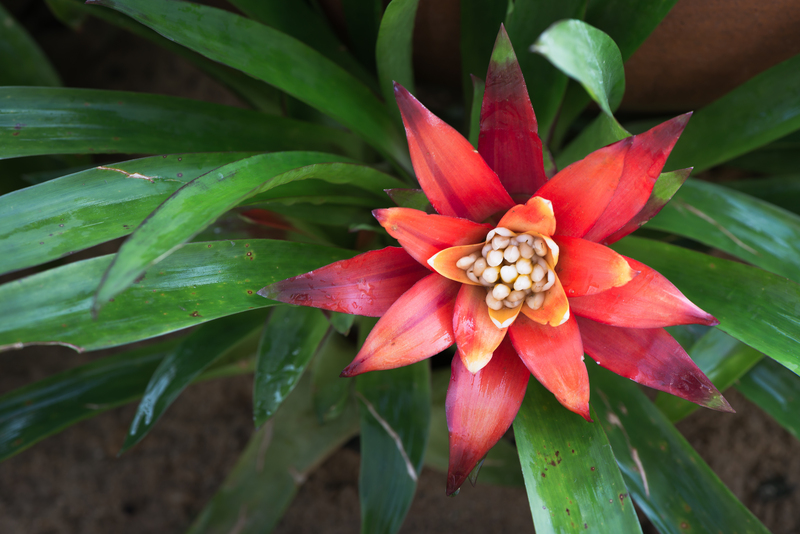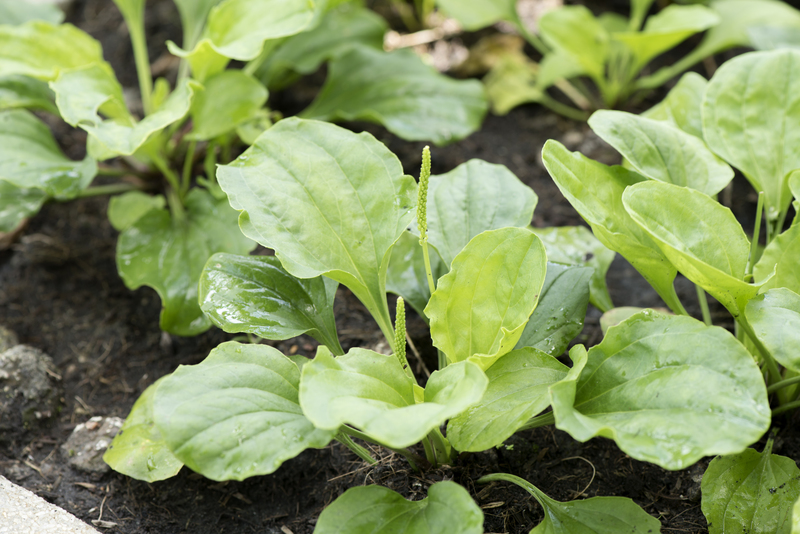Exploring the Art of Hedge Trimming: Shapes and Techniques
Posted on 08/09/2025
Exploring the Art of Hedge Trimming: Shapes and Techniques
Hedge trimming is more than just a routine garden task--it is an artistic endeavor that transforms your landscape into a living masterpiece. Whether you are a professional landscaper or a passionate home gardener, mastering hedge trimming techniques and understanding the vast array of shapes available can make a substantial difference in your garden's visual appeal. In this comprehensive guide, we explore the art of hedge trimming, delving into traditional and modern shapes, techniques, and expert tips to elevate your hedges from ordinary to extraordinary.

Why Hedge Trimming Matters: More Than Meets the Eye
Trimming hedges isn't just about keeping your yard tidy. Well-shaped, healthy hedges:
- Enhance your property's curb appeal
- Define garden structure and boundaries
- Support plant health by promoting new growth
- Encourage wildlife habitat and privacy
Preparing for Hedge Trimming: Tools and Timing
Before embarking on your hedge-shaping adventure, proper preparation is essential. The right equipment and timing are key ingredients for success.
Essential Hedge Trimming Tools
- Hedge Shears: For clean, precise cuts on leaves and small stems.
- Electric Hedge Trimmers: Ideal for larger hedges and tougher branches.
- Hand Pruners: To snip away individual branches for fine shaping.
- Loppers: For tackling thicker branches at the base.
- Protective Gear: Gloves, safety glasses, and sturdy footwear for safety.
- String and Stakes: Perfect for marking straight lines and curves.
- Spirit Level or Guide Board: Ensures perfect symmetry.
Best Time of Year for Hedge Trimming
Timing your hedge trimming not only affects the final look but also the plant's health. Most hedges should be trimmed:
- Early Spring: Before new growth starts, ideal for formal shapes.
- Late Summer: After the main flush of growth, for a final tidy-up.
Hedge Shaping Basics: The Foundations of Great Design
Common Hedge Shapes
Hedge shaping is an ancient craft, with roots in both practicality and ornamentation. Some of the most popular and timeless hedge shapes include:
- Square or Rectangular Hedges: Clean, formal lines for boundaries and privacy screens.
- Rounded or Domed Hedges: Softer appearance, works well for central features and standalone bushes.
- Pyramidal Hedges: Wider base tapering to a point; adds geometry and visual interest.
- Cloud-Pruned Hedges: Organic curves that mimic fluffy clouds; a staple of Japanese gardens.
- Topiary Figures: Sculpted animals, shapes, or abstract forms for a whimsical, artistic touch.
Each hedge trimming style serves a distinct role. Formal hedges provide structure, while informal hedges encourage natural shapes and biodiversity.
Planning Your Hedge Shape
Before making the first cut, visualize your goal. Consider:
- Garden style and existing features
- Sunlight and shade patterns
- Desired level of privacy and wind protection
- Maintenance needs and plant growth rate
Mastering Hedge Trimming Techniques
Basic Trimming Methods
Every successful hedge shape starts with solid trimming technique. Here are the foundational methods:
- Shearing: Use long-bladed shears to cut back new growth evenly. This method is best for formal, geometric shapes and is often used multiple times per season for sharp lines.
- Pruning: Selectively removing individual branches with pruners. Pruning is important for encouraging airflow and light penetration, which prevents disease and keeps hedges healthy inside and out.
- Layered Cutting: Working from the bottom up, trim the lower layers first to maintain a slightly wider base. This "tapering" ensures sunlight reaches all parts, reducing bare patches.
Pro tip: Always stand back frequently to check overall symmetry and shape as you trim--small corrections early can prevent big regrets later!
Shaping Techniques for Popular Hedge Designs
- Square or Box Hedges: Set up vertical string lines and use a straight board on top as a cutting guide. Trim the sides straight up and the top flat, keeping edges crisp.
- Rounded Hedges: Use smooth, sweeping motions. Focus on removing just enough growth to maintain an even dome. Stand back regularly to spot any lopsided areas.
- Pyramidal Hedges: Trim the top narrower than the base. Mark incline guides if necessary, and work around gradually to maintain balance.
- Cloud or Organic Topiary: Start with the basic overall form, then round out individual "clouds." Less is more--avoid overcutting and stick to soft, undulating curves.
- Animal and Sculptural Topiary: Use wire frames or templates. Trim hedges in stages, developing the shape gradually over years for the best results.
Troubleshooting Hedge Shapes
Even the best-laid hedge plans can encounter common pitfalls:
- Leggy Bottoms: Prevent this by slightly angling the sides to keep the base wider than the top (the "A" shape directs sunlight to lower branches).
- Brown Patches: Use sharp, clean tools to prevent crushing; avoid removing too much at once, and allow recovery between trims.
- Uneven Growth: Rotate your trimming direction each time and allow for the natural growth pattern of your specific hedge species.
Creative Hedge Trimming: Taking Hedges to the Next Level
Topiary Art: Where Imagination Meets Garden Craft
Topiary is the pinnacle of hedge trimming artistry. It is the practice of training perennial plants by clipping the foliage and twigs to develop and maintain clearly defined shapes--from animals and geometric forms to intricate abstract patterns.
- Start Simple: Begin with geometric shapes before progressing to animals or complex forms.
- Use Wire Frames: These help guide the design and provide a reference as the hedge grows.
- Patience Pays: Topiary art unfolds over years, not weeks. Allow hedges to grow into the desired bulk before detailed shaping.
- Choose Suitable Species: Common hedge plants for topiary include boxwood, holly, yew, and privet--plants with dense, small leaves and responsive growth habits.
Modern and Contemporary Hedge Trimming Styles
While classic hedges emphasize formality and precision, modern gardens often incorporate softer lines or abstract designs. Consider weaving in different hedge species for color contrasts, variegated foliage, or staggered heights for a dynamic contemporary feel.
Whimsical touches, such as spirals or tiered layers, can add personality and intrigue. Don't be afraid to experiment--with time and care, your hedges become a living canvas and design element.
Maintenance and Aftercare: Keeping Hedges Healthy and Beautiful
Regular care is crucial after shaping. Well-maintained hedges last longer and look more striking.
- Watering: Deep water during droughts--hedges, especially freshly trimmed ones, are prone to stress.
- Feeding: Apply slow-release fertilizer in spring and mid-summer to promote vigorous, lush growth.
- Disease and Pest Control: Inspect for signs of fungal infections, leaf spot, or pests. Prune out affected branches and treat as needed.
- Mulching: Keep mulch at the base to retain moisture and suppress weeds--avoid packing against stems to prevent rot.
- Ongoing Pruning: Light touch-ups during the season maintain the shape and prevent overgrowth.
Reviving Overgrown or Damaged Hedges
All is not lost if your hedge has grown wild or suffered weather damage. Use restorative trimming:
- Hard Pruning: Cut back by up to two-thirds in early spring; most hedge species recover quickly with this method.
- Gradual Reduction: For sensitive or slow-growing species, reduce the height and width by a third per year over several seasons.
- Feed and Water Generously: This speeds recovery and encourages bushier regrowth.
Choosing the Right Hedge for Trimming and Shaping
Not every shrub is suited to the tight sculpting required for traditional hedge shapes. The best hedge plants for trimming have dense foliage, flexible stems, and respond well to repeated cuts. Popular options include:
- Boxwood (Buxus sempervirens): The classic topiary plant, tolerant and evergreen.
- Yew (Taxus baccata): Deep green, holds its shape exceptionally well, good for large or small hedges.
- Privet (Ligustrum): Vigorous, fast-growing, and suitable for geometric hedges.
- Hornbeam (Carpinus betulus): Retains brown leaves through winter, formal appeal.
- Holly (Ilex): Glossy leaves and berries offer wildlife interest.
- Laurel (Prunus laurocerasus): Broadleaf, great for informal, robust hedges.

Environmental and Wildlife Considerations
A skilled hedge trimmer respects both aesthetics and the local ecosystem. Well-managed hedges can shelter birds, bees, and beneficial insects. To balance beauty and biodiversity:
- Avoid trimming during nesting seasons (typically March to August) to protect birds.
- Embrace mixed species hedges for year-round flowers, berries, and varied cover.
- Leave some sections less tightly trimmed as wildlife corridors.
Conclusion: The Living Art of Hedge Trimming
Exploring the art of hedge trimming--shapes and techniques unlocks endless possibilities for creative, beautiful, and sustainable gardens. Whether you prefer stately box hedges, soft organic forms, or whimsical topiary, the secret lies in thoughtful planning, precision techniques, and regular care.
As you gain confidence, experiment with new hedge trimming methods and shapes. Your garden will evolve with you, expressing your style and creating a distinctive outdoor space.
Invest in quality tools, stay mindful of the seasons, and let your creativity flourish. With each careful cut, you nurture not only your landscape but also your connection to the timeless art of hedge shaping.



